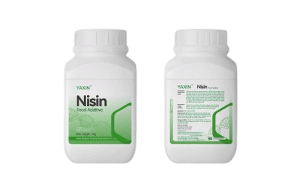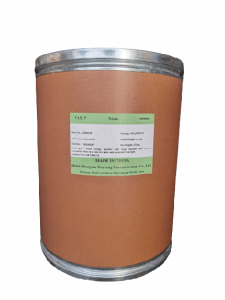
 CONTACT
CONTACT
- Linkman:Linda Yao
- Tel: +8618231198596
- Email:linda.yao@dcpharma.cn
- Linkman:CHARLES.WANG
- Department:Overseas
- Tel: 0086 0311-85537378 0086 0311-85539701
The main component of Natamycin
TIME:2025-02-14Natamycin is a formulation primarily composed of natamycin and lactose, commonly used in food and pharmaceutical applications. Below is a detailed introduction:
I. Main Components
1. Natamycin
Also known as pimaricin, natamycin is a polyene macrolide antifungal agent produced by the fermentation of Streptomyces natalensis. It specifically binds to ergosterol in fungal cell membranes, forming pores that lead to the leakage of essential intracellular substances such as amino acids and electrolytes, thereby inhibiting fungal growth and reproduction. Natamycin is highly effective and low in toxicity, showing strong inhibition against various molds and yeasts while having little to no effect on bacteria and other microorganisms.
2. Lactose
Lactose is a disaccharide composed of one molecule of glucose and one molecule of galactose, naturally found in the milk of mammals. In natamycin formulations, lactose mainly acts as a carrier and diluent, helping to evenly disperse natamycin while also improving the palatability, stability, and other physical properties of the formulation.
II. Formulation Types and Characteristics
1. Natamycin-Lactose Solution
This formulation consists of natamycin dissolved in a lactose-containing solution. It exhibits good fluidity and dispersibility, allowing for even spraying or coating on food surfaces, ensuring rapid antimicrobial action. This form is commonly used for preserving fruits, vegetables, meat, and other perishable foods.
2. Natamycin-Lactose Tablets or Capsules
By mixing natamycin with lactose and other excipients, the formulation can be processed into tablets or capsules. In the pharmaceutical field, this form is used for oral treatment of fungal infections. Tablets and capsules are convenient for patient consumption and can help control drug release, thereby prolonging its therapeutic effects.
3. Natamycin-Lactose Powder
This powdered formulation is produced by drying and grinding natamycin with lactose. The powdered form is easy to store and transport and can be conveniently added to various food or pharmaceutical products. For example, when added to baked goods, it effectively inhibits mold growth, thereby extending shelf life.
III. Applications
1. Food Industry
As a safe and effective food preservative, natamycin prevents contamination by molds and yeasts, thus extending shelf life. Examples of applications include:
Dairy Products: Spraying natamycin-lactose solution on the surface of cheese and yogurt prevents mold growth, maintaining product quality and appearance.
Baked Goods: Adding natamycin-lactose powder to bread, pastries, and other baked products prevents mold development, keeping food fresh for longer periods.
2. Pharmaceutical Industry
Natamycin is also used to treat localized or systemic fungal infections. Examples include:
Eye Infections: Formulated as eye drops for treating fungal eye infections.
Vaginal Infections: Processed into vaginal suppositories to treat Candida infections.
By leveraging its antifungal efficacy and safety, natamycin continues to be widely applied in food preservation and medical treatments.
- Tel:+8618231198596
- Whatsapp:18231198596
- Chat With Skype







